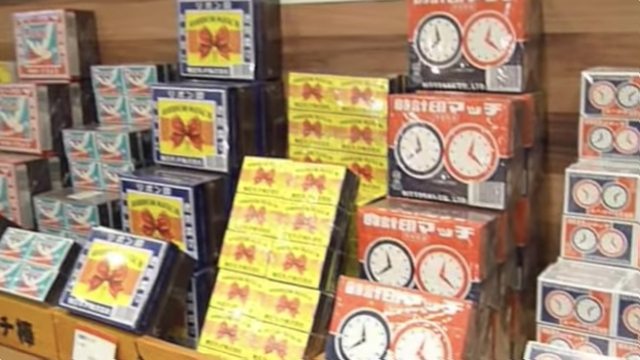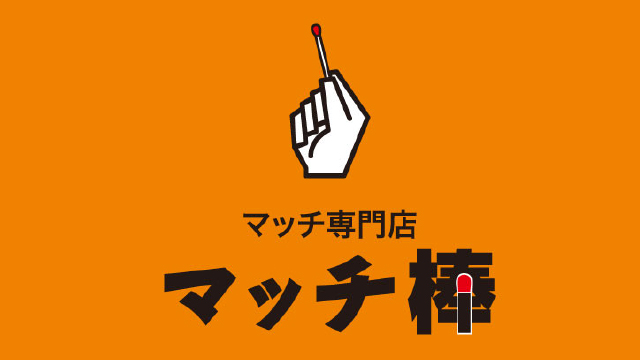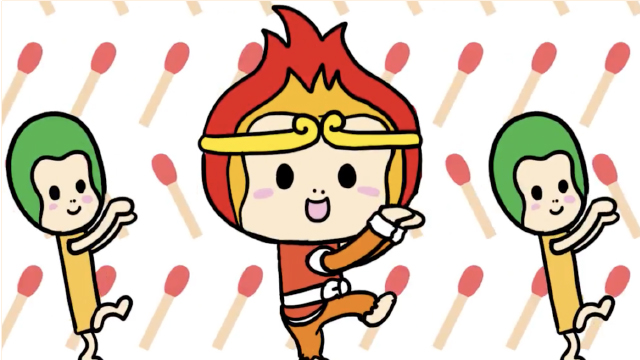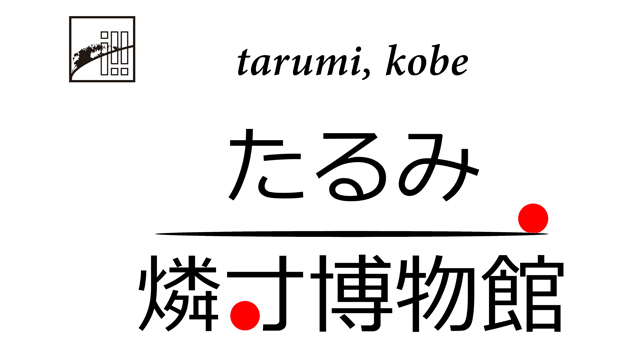Chat About Matches
HOME > Virtual Museum > Chat About Matches > Match, Label and Travel
- GuestMr. Masahiro Yano (owner of a jazz-room, ‘TOMU’)
- HostsYutaka Kato

Mr. Yano is the owner of a jazz tearoom ‘TOMU’ in Asagaya, Tokyo, and ‘Dongara’ where black music has been mainly played. Mr. Yano is a collector of matchboxes that were given away in jazz tearooms in 1960’s and 70’s.
Jazz&Culture asagaya futodoki:http://adobensya.jp
 Kato
Kato
I have been collecting trademark matches (that have been sold as a commodity,) but, today, please let me ask about your collection of Jazz-tearoom matches that are advertising matches, Mr. Yano.
I am impressed by the volume of your collection – they are jazz-tearoom matches throughout the country. They are classified by municipal category first, and then, by Tokyo wards. Have you visited these jazz-tearooms and collected matches yourself?
Yes, I have. I am a traveler. (Smile)
I have thriftily traveled throughout Japan since I was young and visited local jazz-tearooms. I have even gotten a night’s lodging at a stranger’s house like a traveling priest (laughter.) I collected matches something like a proof of my pilgrimage, and then….so many of them!
I have described the footprint of my trips in my website, and the title is “Matches, Labels, and Travels” (laughter.) Matchboxes I collected and my traveling are deeply related. The matches I was given at a jazz-tearoom were a certain kind of traffic bill for my traveling.
 Yano
Yano Kato
Kato
I see. Collecting matchboxes means recording your traveling, doesn’t it?
Yes, it does. The match collection describes my travel record during my age in 20’s to about 36 years old. I went to a town I didn’t know and visited a jazz-tearoom, and then asked for 3 matches at least. The reason was; I needed 3 matches by all means; one for my own use, one for my collection, and one for exchange. However, jazz-tearoom owners didn’t like my asking for three matches (laughter.) Many of owners were grim-looking those days, so I often balked to ask for matches (laughter.) However, the more we talked, the more friendly the owner became, and I told him that I was from Tokyo. Then, he gave me 3 matches, and I even enjoyed information exchange and hearing about local events.
 Yano
Yano Kato
Kato
I think matches in a way symbolize culture of the period in Japan; ‘Advertising matches’ especially indicate very well the periodical events such as fashions of those days and social atmosphere, etc.
It is exactly so. Looking at a match label in the collection brings those days’ memories to us, and I think it is the visual function power that works through match labels and takes us back to circumstances of that chaotic time.
 Yano
Yano Kato
Kato
Give-away matches were important advertising media those days, and many matches represented shops’ status, or pride, or existing value of a shop or a company. Therefore, shops and companies designed labels of matches with zeal and love and emphasized their position in the media.
As for matches given away by jazz-tearooms, wide flat type matches were more ideal. They were made proportionally same with a LP jacket. Owners of jazz tearooms fervently loved in designing their stores’ match labels as if producing mini record jackets. Consequently, tearoom customers who were given those matches had fun in displaying them in their rooms (laughter).
 Yano
Yano Kato
Kato
Ah, yes, indeed! A match label’s proportion ratio is the same as a LP jacket. Matches were not only for advertising, but also they had significant meanings for both of manufacturers and users.
That is why shop owners didn’t want to give away matches though they were made for a purpose of give-away (laughter). Shop owners could give away matches if customers would use them appreciatively but they didn’t want to give away if matches would be scamped. I think it was because match production actually was not free of charge. Those days, an ordering lot of match production was 5,000 pieces, or 10,000 pieces, and the cost was high. (These days, 2,500 pieces is the minimum lot.)
 Yano
Yano Kato
Kato
Matches were made for advertisement, and do you mean they were used as if like an expensive pamphlet type, not like a throw-away leaflet paper?
Yes, it is so (laughter).
 Yano
Yano Kato
Kato
I got it! That is why jazz-tearoom matches are all fascinating and never arouse boredom.
I think there is another reason why matches were important in a jazz-tearoom. We were not able to use a lighter in a jazz-tearoom those days. We had to use matches in the tearoom.
 Yano
Yano Kato
Kato
Why was it so?
In a jazz-tearoom, very quiet circumstance was required so that everyone could listen to the music earnestly. The shop circumstance was “Speak only in a small and low voice” (laughter). Therefore, using a lighter was definitely an unfavorable action. A small metallic sound of opening a lighter, and a relatively large sound of lightening a cigarette were an anathema and other customers stared at the culprit (laughter). Therefore, people used only matches when smoking a cigarette. Sound of striking a match stick was easily absorbed in jazz sounds. Besides, I think looking at the flame of a match stick was something else when you were embraced by jazz music… It was as if doing meditation.
 Yano
Yano Kato
Kato
Yes, I remember it now. I also frequently went to a jazz-tearoom for about a year when I was a university student, but I was not able to talk with my friends there. It was hard to communicate with my friends even though something I wanted to ask or I want to tell popped up in my mind. Patiently and quietly waiting till music ended became painful for me, so I quitted visiting a jazz-tearoom (laughter).
I remember those days there were various types of tearooms that played jazz music, classic music, rock music, Latin music, and music for sing-along, and we enjoyed both music and exchanging information. The ambience of a tearoom those days was considerably different from that of a coffee shop today.
60’s and 70’s were exactly years of coffee and coffee shop culture, which was a pinnacle of coffee cultural glory. Being a customer of a coffee shop was considered to be more refined or sophisticated than being a customer of a bar (laughter). A coffee shop those days was a place where many people of different cultures gathered; then information and new cultural issues were sent out from the place. Could we say that the coffee shop was an information source type existence in a certain meaning those days? However, a student who loved going to a coffee shop was often determined as a villain by adults.
 Yano
Yano Kato
Kato
We are now able to have information on the Internet easily, but in the old time, we had to go out on foot to communicate with those who had the information. A coffee shop had a significant role in that sense, too.
My acquaintance named Michael S. Molasky has been studying about jazz-tearoom in Japan, and he says that Japanese jazz-tearoom is very peculiar; peculiar like terakoya (a small private school), which does not exist in the U.S.A.
 Yano
Yano Kato
Kato
Indeed (smile). There was odd relationship between the owner of a jazz-tearoom and a customer, which was similar to relationship between a teacher and a student. Young people learned about jazz and American culture while going to a jazz tearoom frequently; including social issues in that age such as human rights and pacifism.
Yes, it had an image of “base of the culture” charged with a great deal of energy. Therefore, we were proud of being a fan of jazz music. Especially, being a fan of “Modern jazz” meant handsome; the music had to be modern jazz, (laughter).
 Yano
Yano Kato
Kato
How old were you when first interested in jazz music?
First time was when I was 16-year-old in summer vacation. My high school senior friend took me to a jazz tearoom. The name was “DIG” in Shinjuku, Tokyo. I was tremulous in the tearoom…Then Charles Mingus’ music, ‘Pithecanthropus Erectus’ and ‘Oh Lord, don’t let them drop that atomic bomb on me!’ were played, and I was stunned wondering, “Wow! What the good music! I want to know the names of the music!” Then, tearoom’s match picture drawn by Bernard Buffet also impressed me with impact. The scene that combined music sounds and match label design on the first day was recorded in my brain vividly (laughter). That was my first experience of jazz music and starting point of my tearoom history, which means these DIG matchboxes are special ones for me.
 Yano
Yano Kato
Kato
It’s amazing that there are so many matchboxes only for one tearoom, ‘DIG’. By the way, what are little memos written in the white spaces?
I wrote the name of music I listened then (laughter). My friend made the box for me to keep DIG matchboxes (smile).
 Yano
Yano Kato
Kato
Looking at your collection and observing designs of match labels, I think that characteristic nature of jazz lies in the monotone pattern, namely letters are written in white on the black background. That is why the label design is unexpectedly looks better when blue and/or green color(s) are proportionally added. For instance, Monroe design of Air Gin (Kanagawa) is wonderful and tearoom name printed in green is conspicuous.
There are some shops that used pictures of Marilyn Monroe as the design motif. It is because jazz was flourishing in the 60’s. And the symbol of the United States in 60’s was Marilyn Monroe (smile).
 Yano
Yano Kato
Kato
Are jazz-tearooms disappearing in the same tempo of match production?
Unfortunately yes. However, about 600 to 700 jazz-tearooms are still operating (including live music houses) in Japan. To me, ‘matches’ means travelling and encountering people with sweet and sour memories; ultimately, it is an eye-witness of my life.
 Yano
Yano



